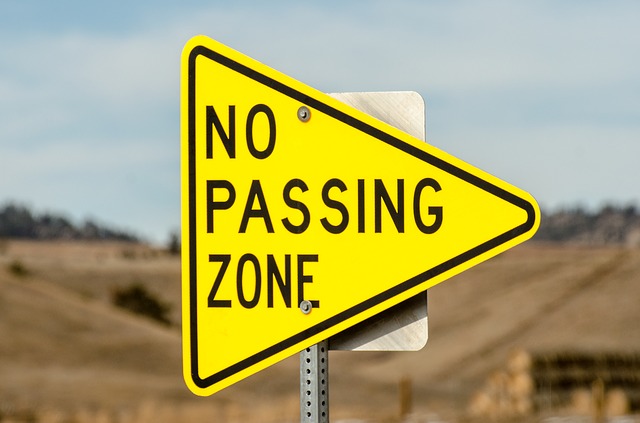No-Passing Zone Sign: Why It’s Smart to Obey It
Image by Lisa Johnson from Pixabay
If you are a regular road user, there is no doubt you have come across many road signs on the way. There are multiple traffic road signs, each with a specific purpose. Road signs guide and warn drivers and control traffic flow for pedestrians and vehicles alike. All road signs are designed to deliver a simple but clear message.
They are ample to command your attention and installed in places that give drivers enough time to respond. One of the most popular traffic signs is the no-passing zone sign.
What Is a No-Passing Zone Sign?
A no-passing zone sign is a sign on the roadway indicating you are entering a no-passing zone where you are not legally permitted to pass another vehicle. The sign warns drivers of an unseen threat ahead, either an intersection or driveways that could lead to a collision. No-passing zones are standard on one-lane roads, construction zones, or school areas.
The no-passing zone sign is marked with a yellow line on the left part of the lane. This means you should drive on the right side and not pass other vehicles, regardless of how safe you feel about it. The sign is there to protect you, pedestrians, and other motorists in the surrounding area.
When Is Passing Illegal?
Passing is illegal even when there’s no no-passing-zone sign in sight in several scenarios:
- Anytime double solid lines are in the middle of the road.
- In harsh weather conditions that hinder your vision; your visibility might be too low to pass other vehicles if it is snowing, foggy, or raining.
- When a bend or curve hinders your view, you need to be able to see ahead in the opposite lane at least 800 feet to pass legally and safely.
- When approaching an incline or hill, vehicles driving towards you may be obstructed from your view.
- When the vehicle ahead of you is turning left.
- Suppose you are 100 feet away from a bridge or tunnel. The road ahead may be narrow and not safe or legal to pass.
- When using the center lane or need to enter the center lane (these two lanes are for entering other entry points or making a left turn)
Most of these no-passing scenarios need common sense, but it is surprising how many people ignore the rules and cause severe accidents. It is not only careless to ignore the conditions but illegal. Know the driving requirements in your state to be on the safe side.
If you cause an accident in a no-passing zone, you will need to contact an auto accident attorney to know whether the law applies to your case, what penalties you risk, and the compensation you may owe to accident victims.
Why It’s Smart to Obey A No Passing
There are harsh penalties for not obeying a no-passing zone sign. However, there is an exception when traffic has to move to another lane due to temporary obstructions. If you fail to obey a no-passing zone sign, you risk receiving a traffic ticket. In the long run, there are severe fines for failure to adhere to this sign. Besides the fines, driving points will be added to your driving record.
Penalties and points vary from one state to another. Violating no-passing zone rules could add four points or more to your record. In some scenarios, it may lead to suspension of the driver’s license if the offense is combined with other traffic violations.
Besides additional points to your driving record, violation of the no-passing zone rule may lead to the suspension of your driver’s license, which may lead to a hefty insurance increase or even loss of your driver’s license.

